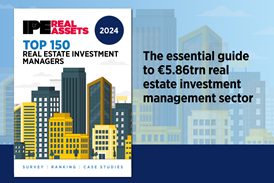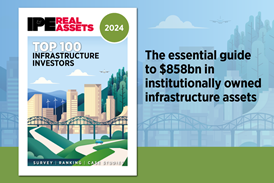The approaching end of a cycle tends to focus minds as investors try to read the signs and adjust their strategies, experts agreed at the PropertyEU European Real Estate Risk Management Briefing in London this week.

‘Everyone is more focused on risk now,’ said David Ryland, partner at Paul Hastings (pictured). ‘This renewed focus is reflected in regulations, and in a significant increase in the use of insurance.’
Increased risk awareness does not mean less interest in the property sector, which continues to attract significant capital flows.
‘I have not seen a single big investor say they are reducing their allocation to real estate across the globe, quite the opposite,’ said Mahdi Mokrane, Head of European Research and Strategy at LaSalle Investment Management. ‘It makes sense in this phase of the cycle to reposition your portfolio, get going and find new opportunities, maybe explore new sectors.’
Even in the UK, which has suffered from the uncertainty linked to the upcoming referendum, ‘property still looks like an attractive asset, and there is a lot of dry powder waiting to pounce right after the vote,’ said Charles Ostroumoff, Director of Arca Property Risk Management.
To know where to go from here, and to formulate an effective risk management strategy, it helps to know where we are in the real estate cycle. ‘Everyone has a different view on how long the current cycle will last,’ said Ryland. ‘What is certain is that it will end some time, and it will most likely be triggered by very different factors than the last crisis.’
According to LaSalle research, in the capital markets cycle the UK is close to the peak, France and Spain are between recovery and expansion and Italy is at the early recovery stage. In the demand and supply cycle, the UK is peaking, Italy is bottoming and France and Spain are on the recovery path.
But even the peak, as in the case of the UK, can last a long time, just like a bubble can, pointed out Ostroumoff: ‘It can go on for years, depending on what is going on in the capital markets. It is an important link, because what happens in the capital markets determines what happens in the property market, as we saw during the credit crunch.’
Towards the peak of the cycle, when fundamentals are not stacking up and you are in bubble territory, his advice is to manage risk with IPD futures: ‘You can keep your assets but insure your portfolio against sharp sudden falls, protect capital values and enhance returns. We have seen an increase in interest in this tool because of the stage of the cycle.’
The UK is leading the field in property market risk management using futures, because the IPD index is used as a benchmark and it is reliable. Futures are quick, simple and cost-efficient to trade. ‘It is a useful risk management tool,’ said Ryland.










